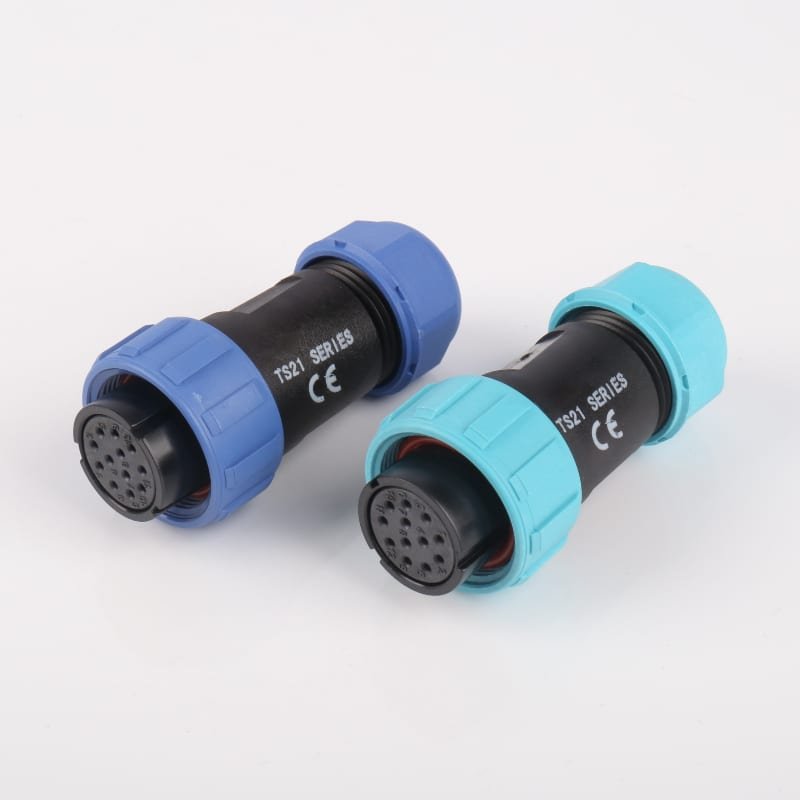Introduction
Have you ever wondered why some cable assemblies can withstand harsh marine environments while others fail within months? The secret lies in a manufacturing process that most people have never heard of, yet it’s protecting critical connections in everything from underwater sensors to aerospace applications. Overmolding is a specialized injection molding technique1 that encapsulates cable connections with thermoplastic materials, creating seamless, waterproof seals that achieve IP67/IP68 ratings2 and eliminate traditional failure points.
As Samuel, Sales Director at Bepto Connector, I’ve witnessed countless projects where standard cable assemblies failed due to water ingress, causing expensive downtime and safety concerns. Just last month, David from a major offshore wind farm in Denmark contacted us in panic – their standard cable connections were failing after just six months of exposure to saltwater spray, threatening a multi-million dollar project timeline.
Table of Contents
- What Is Overmolding Technology?
- How Does the Overmolding Process Work?
- What Are the Key Benefits of Overmolded Cable Assemblies?
- Which Industries Rely on Overmolded Solutions?
- How to Choose the Right Overmolding Solution?
- FAQs About Overmolding
What Is Overmolding Technology?
Overmolding is an advanced manufacturing process where thermoplastic material is injection molded directly over pre-assembled cable connections, creating a permanent, waterproof seal that eliminates traditional weak points.
The Science Behind Overmolding
At its core, overmolding transforms vulnerable connection points into robust, sealed units. Unlike traditional methods that rely on separate sealing components like O-rings or gaskets, overmolding creates a molecular bond3 between the cable jacket and the molded housing. This eliminates the multiple interfaces where water typically penetrates.
The process utilizes specialized thermoplastic compounds – typically TPU (Thermoplastic Polyurethane), TPE (Thermoplastic Elastomer), or PVC – that are selected based on the specific environmental requirements. These materials offer excellent adhesion properties while maintaining flexibility across extreme temperature ranges.
Key Technical Specifications
| Property | Standard Range | Marine Grade |
|---|---|---|
| IP Rating | IP65-IP67 | IP68-IP69K |
| Temperature Range | -40°C to +85°C | -40°C to +125°C |
| Tensile Strength | 15-25 MPa | 25-35 MPa |
| Shore Hardness | 80A-95A | 90A-60D |
How Does the Overmolding Process Work?
The overmolding process involves precise injection molding where heated thermoplastic material is injected around pre-positioned cable assemblies in custom-designed molds, creating seamless integration between cable and connector housing.
Step-by-Step Process Breakdown
1. Pre-Assembly Preparation
The cable assembly is first prepared with connectors attached and tested for electrical continuity4. Critical dimensions are verified to ensure proper fit within the molding fixture.
2. Mold Positioning
The assembly is precisely positioned in a custom-designed mold using specialized fixtures. This step is crucial – even millimeter variations can compromise the final seal integrity.
3. Material Injection
Heated thermoplastic material (typically 180-220°C) is injected under high pressure (800-1200 bar) around the cable assembly. The material flows around every contour, creating a complete encapsulation.
4. Cooling and Curing
Controlled cooling ensures proper material crystallization and adhesion. This typically takes 30-60 seconds depending on wall thickness and material type.
5. Quality Verification
Each assembly undergoes pressure testing, electrical continuity checks, and visual inspection before approval.
Critical Success Factors
The difference between a successful overmold and a failure often comes down to three key factors:
- Material Selection: The thermoplastic must be chemically compatible with the cable jacket
- Temperature Control: Precise heating prevents cable damage while ensuring proper flow
- Mold Design: Custom tooling must accommodate cable routing and provide uniform wall thickness
What Are the Key Benefits of Overmolded Cable Assemblies?
Overmolded cable assemblies provide superior environmental protection, enhanced durability, and reduced maintenance costs compared to traditional sealed connections, making them essential for mission-critical applications.
Superior Environmental Protection
The primary advantage is unmatched environmental sealing. Traditional cable assemblies rely on multiple sealing interfaces – each one a potential failure point. Overmolding eliminates these interfaces entirely.
I remember Hassan, who owns a chemical processing facility in Abu Dhabi, telling me about his previous experience with standard IP65-rated connections. Despite the rating, corrosive vapors found their way into connection points within 18 months, causing $200,000 in unplanned downtime. After switching to our overmolded assemblies, he’s had zero environmental failures in over three years of operation.
Enhanced Mechanical Properties
| Benefit | Traditional Assembly | Overmolded Assembly |
|---|---|---|
| Strain Relief | Limited by separate components | Integrated, gradual transition |
| Impact Resistance | Vulnerable at connection points | Uniform protection |
| Vibration Resistance | Prone to loosening | Permanent bond |
| UV Resistance | Depends on individual components | Optimized material selection |
Cost-Effectiveness Over Time
While overmolded assemblies have higher initial costs, the total cost of ownership is significantly lower:
- Reduced Maintenance: No periodic seal replacement required
- Extended Service Life: 10-15 year operational life vs. 3-5 years for traditional assemblies
- Lower Failure Rates: 99.8% reliability vs. 95-97% for standard connections
- Simplified Installation: No field assembly of sealing components required
Which Industries Rely on Overmolded Solutions?
Marine, renewable energy, automotive, and industrial automation industries depend on overmolded cable assemblies for reliable operation in harsh environments where standard connections would fail.
Marine and Offshore Applications
The marine industry was among the first to adopt overmolding technology extensively. Saltwater exposure, pressure cycling, and mechanical stress create the perfect storm for connection failures.
Common Applications:
- Underwater sensor networks
- ROV (Remotely Operated Vehicle) umbilicals
- Offshore platform instrumentation
- Marine navigation equipment
Renewable Energy Sector
Solar and wind installations face unique challenges – extreme temperature cycling, UV exposure, and 25-year service life requirements.
Key Applications:
- Solar panel junction boxes
- Wind turbine nacelle connections
- Battery management system interfaces
- Power inverter connections
Automotive Industry
Modern vehicles contain hundreds of electrical connections, many exposed to road salt, temperature extremes, and vibration.
Critical Applications:
- Engine bay sensor connections
- Trailer lighting harnesses
- EV charging port assemblies
- Autonomous vehicle sensor arrays
Industrial Automation
Factory environments present unique challenges with chemical exposure, washdown procedures, and continuous operation requirements.
How to Choose the Right Overmolding Solution?
Selecting the optimal overmolding solution requires careful evaluation of environmental conditions, electrical requirements, mechanical stresses, and regulatory compliance needs specific to your application.
Environmental Assessment Matrix
| Factor | Low Impact | Medium Impact | High Impact |
|---|---|---|---|
| Temperature Range | -20°C to +60°C | -40°C to +85°C | -55°C to +125°C |
| Chemical Exposure | Mild cleaning agents | Industrial solvents | Acids/Bases |
| Mechanical Stress | Static installation | Occasional flexing | Continuous movement |
| Water Exposure | Splash resistant | Temporary immersion | Continuous submersion |
Material Selection Guidelines
TPU (Thermoplastic Polyurethane)
- Best for: High flexibility, abrasion resistance
- Temperature range: -40°C to +80°C
- Ideal applications: Robotics, medical devices
TPE (Thermoplastic Elastomer)
- Best for: Chemical resistance, cost-effectiveness
- Temperature range: -50°C to +100°C
- Ideal applications: Automotive, industrial
Modified PVC
- Best for: UV resistance, flame retardancy
- Temperature range: -30°C to +70°C
- Ideal applications: Outdoor installations, building systems
Regulatory Compliance Considerations
Different industries require specific certifications:
- Marine: DNV GL, ABS classification
- Automotive: ISO/TS 1699, USCAR standards
- Medical: ISO 13485, FDA biocompatibility
- Hazardous Areas: ATEX, IECEx certification5
Conclusion
Overmolding technology represents a paradigm shift in cable assembly design, moving from mechanical sealing solutions to integrated, molecular-level protection. As environmental demands increase and system reliability becomes more critical, overmolded assemblies offer the robust, long-term solution that traditional methods simply cannot match.
At Bepto Connector, we’ve invested heavily in overmolding capabilities because we believe it’s not just a manufacturing technique – it’s the future of reliable electrical connections. Whether you’re designing the next generation of renewable energy systems or protecting critical marine infrastructure, overmolding provides the confidence that your connections will perform when it matters most. 😉
FAQs About Overmolding
What is the difference between overmolding and traditional cable sealing methods?
A: Overmolding creates a permanent molecular bond between the cable and housing, eliminating multiple sealing interfaces that are vulnerable to failure. Traditional methods rely on separate O-rings, gaskets, or potting compounds that can degrade over time and create leak paths.
Q: How long do overmolded cable assemblies typically last?
A: Properly designed overmolded assemblies typically last 10-15 years in harsh environments, compared to 3-5 years for traditional sealed connections. The exact lifespan depends on environmental conditions, material selection, and application requirements.
Q: Can existing cable assemblies be overmolded, or do they need to be designed from scratch?
A: While it’s possible to overmold some existing assemblies, optimal results require design-for-manufacturing consideration from the beginning. Cable jacket materials, connector types, and dimensional constraints all affect overmolding success and should be specified during initial design phases.
Q: What IP ratings can overmolded assemblies achieve?
A: Overmolded assemblies routinely achieve IP67 and IP68 ratings, with some specialized designs reaching IP69K for high-pressure, high-temperature washdown applications. The exact rating depends on design requirements and testing protocols.
Q: How much more expensive are overmolded assemblies compared to standard connections?
A: Initial costs are typically 30-50% higher than standard assemblies, but total cost of ownership is significantly lower due to extended service life, reduced maintenance, and higher reliability. Most customers see ROI within 2-3 years through reduced downtime and maintenance costs.
-
Learn about the fundamental principles of the injection molding manufacturing process. ↩
-
Understand what the IP (Ingress Protection) ratings mean and how they define levels of sealing effectiveness. ↩
-
Explore the chemical principles of molecular bonds and how they create strong adhesion between materials. ↩
-
Discover the importance of electrical continuity and how it is tested to ensure a complete circuit path. ↩
-
Review the official standards for ATEX and IECEx certification for equipment used in explosive atmospheres. ↩




